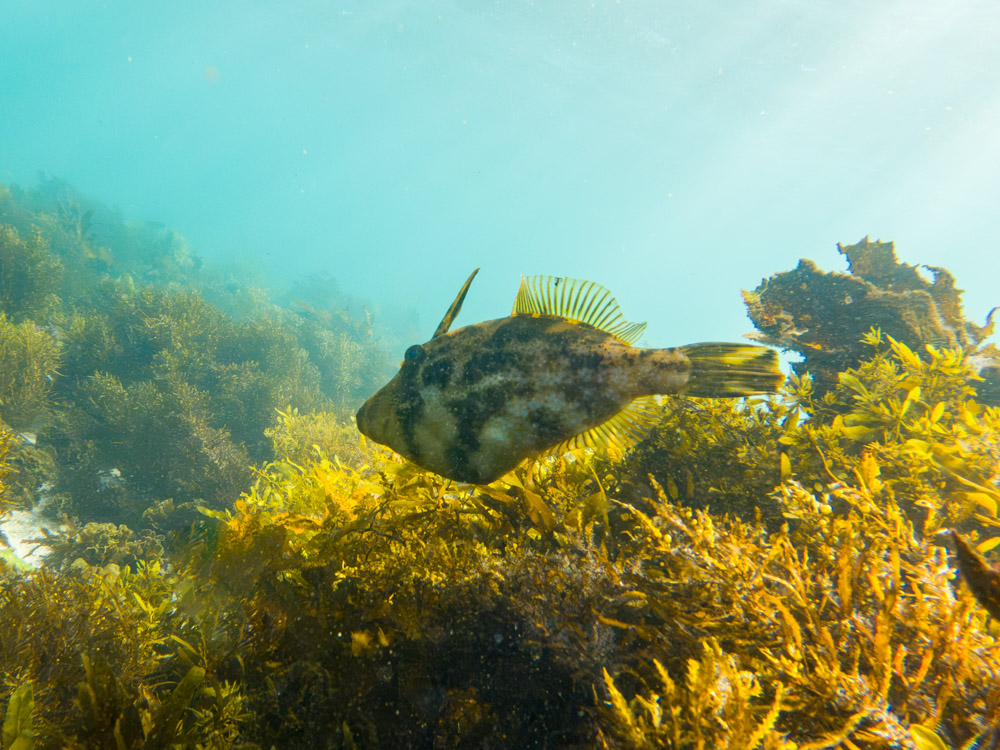The Rough Leatherjacket fish, scientifically known as Scobinichthys granulatus, is a member of the Monacanthidae family, which contains other Leatherjackets. Its skin has a unique, granulated texture that lends to its name. But it’s not all rough – these fish sport vibrant colours ranging from greenish to brown hues, blending perfectly with the marine landscape.
Identifying the Rough Leatherjacket
Recognising a Rough Leatherjacket is easy once you know what you’re looking for. They have elongated bodies, small mouths, and eyes set high on the head. The real giveaway is a distinctive spine on top of the head, which can be raised or lowered. This is a trademark of the Leatherjacket family.

These creatures are not dangerous to humans, but do exercise caution around the dorsal spine – it can deliver a nasty prick if mishandled.
Distribution and Conservation Status
The Rough Leatherjacket enjoys the southwestern Pacific Ocean, especially around Australia and New Zealand. The best places to spot Rough Leatherjackets are rocky reefs with dense seagrass or kelp beds along the Australian coast. New South Wales, Victoria and Western Australia have locations teeming with these fish. Usually at a depth range of 1 to 30 metres.
In New South Wales, good locations to spot the Rough Leatherjacket fish are Gordons Bay and Shelly Beach.
In terms of conservation, they’re not currently listed as threatened or endangered. However, like all marine life, they’re impacted by human activities such as pollution and habitat degradation.
Behaviour and Character
Rough Leatherjackets are invertebrate munchers, with crustaceans and mollusks making up most of their diet. They’re generally calm and non-aggressive, unless feeling threatened or during mating, when they show off with rapid colour changes.
They are rather skittish and will generally swim away from you before you can have a closer look.

Distribution
Temperate waters of from Queensland to West Australia, around the south.
Facts
Max Size: 35 cm
Depth: 0-30m
Lifespan: Unknown
Risk and Safety
No risk, will avoid contact.
Conservation
IUCN Status: Least Concern
Population: Trend Unknown